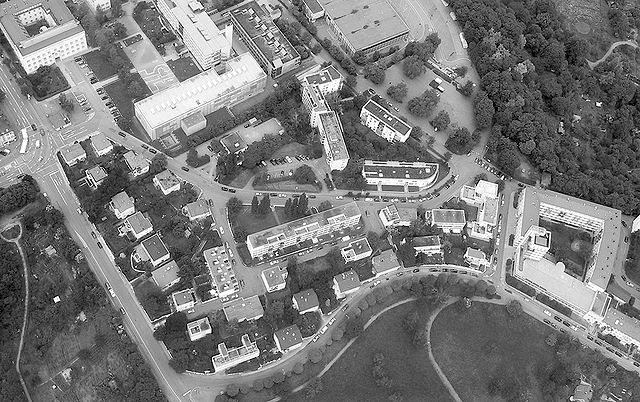On July 23rd 2012 the Weißenhofsiedlung Stuttgart celebrates its 85th "birthday".
An anniversary which provides a near-perfect excuse to relive one of the most important moments in the development of European Modernism.
As if we really need an excuse.
Initiated by the Deutscher Werkbund in cooperation with Stuttgart City Council the Weißenhofsiedlung comprised some 63 flats in 33 buildings designed by a truly stellar collection of international architects and was just one part of a larger exhibition entitled "Die Wohnung" which looked more generally at the future of "domestic arrangements" in the context of the economic realities in inter-war Europe.
In keeping with this wider context the Württemberg Section of the Deutscher Werkbund succinctly formulated the principle aim of the project in the 1926 publication "Die Wohnung der Neuzeit" as ".... a reduction in house construction and running costs, in addition to a simplification of housework and a general improvement in living standards". An aim that was to be achieved principally through the use of new materials, new approaches and new technology.
We know, we know ... but back then it was pretty revolutionary stuff.
For lest we forget this was still a period when opulent ornamentation was considered a symbol of success. And nothing conferred social status much like a living room sideboard that looked as if it had been hewn from a single tree.
Which is of course one of the reasons the Weißenhofsiedlung is and was so important: it brought this new thinking to a mass public in a form that made it clear, understandable but for all was rooted in the possible rather than presented as some unachievable futuristic vision. The Weißenhofsiedlung was comprised of real houses that real people were going to live in.
Construction of the Weißenhofsiedlung started on March 1st 1927 the exhibition was opened on July 23rd and ran until October 31st and attracted over half a million visitors. Figures which as with those for "Design in Use, USA" need to be considered in context of the period and transport possibilities. Which if you do properly leads you to the conclusion that the exhibition not only caught the imagination of the masses but was also a huge success.
Sadly not all properties have survived, a combination of war and neglect having put paid to, for example the contributions from Max Taut or Hans Poelzig; however, some two thirds of the buildings can still be enjoyed.
And indeed should be.
Its all too easy to reduce modernism down to a couple of chairs and the Bauhaus school(s). We know we say that a lot. But it is important. Because to be able to understand where we currently are with design and architecture one needs to understand what the likes of Mies van der Rohe, Walter Gropius or Mart Stam wanted, why they wanted it, how the wanted to achieve it but also how their opponents wanted to stop them.
The Weißenhofsiedlung Stuttgart doesn't provide all the answers. Is however a very important piece of the puzzle.
